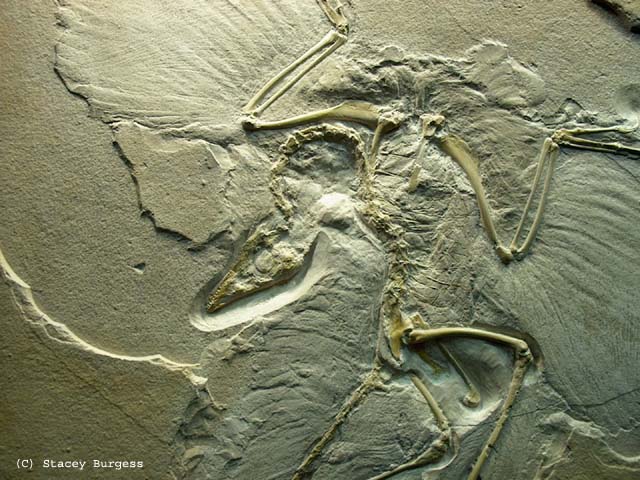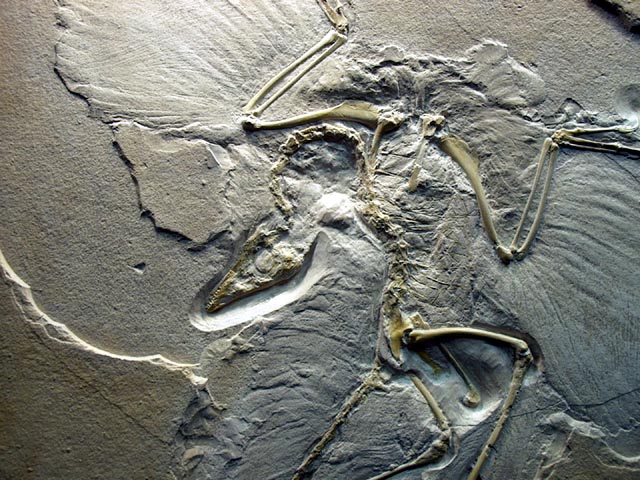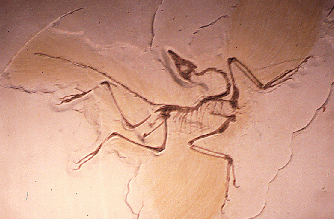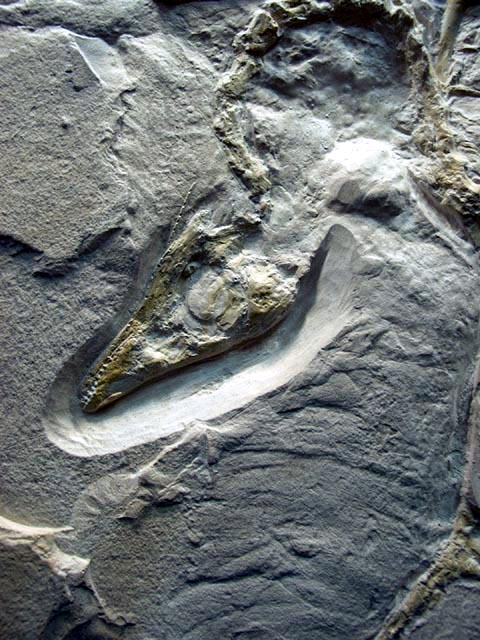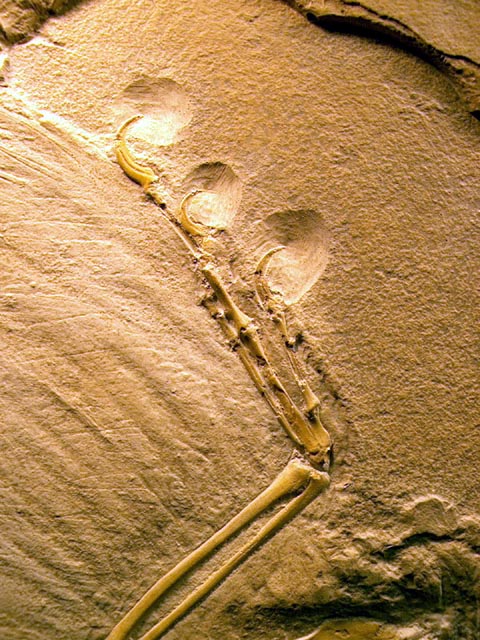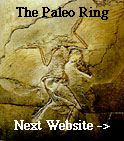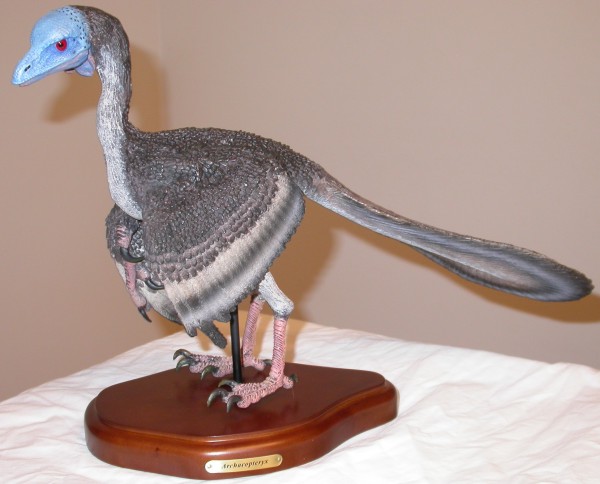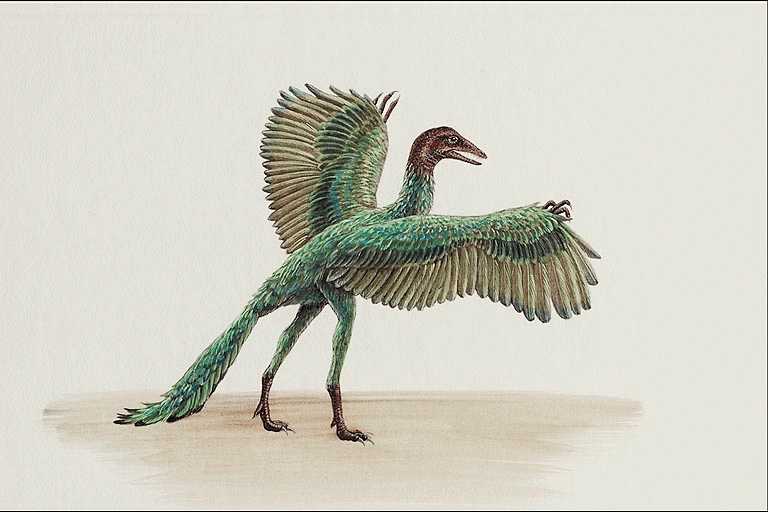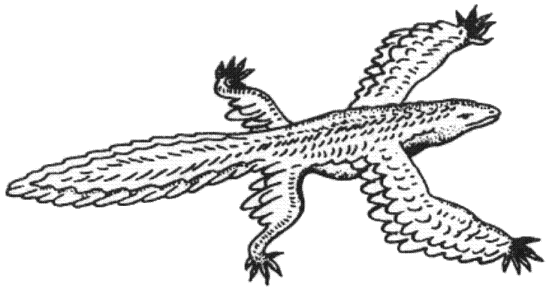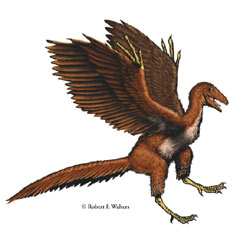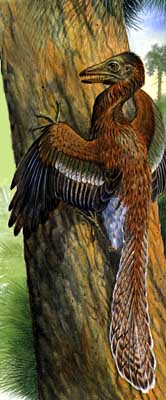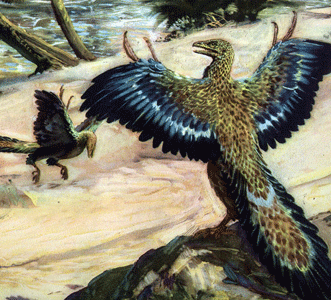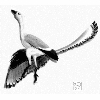Archaeopteryx von Meyer, 1861 sensu Nopcsa, 1927
[nomen conservandum]
Archaeopteryx von Meyer, 1861
(N. Jahrb. Min., 1861, 679. NcZ) "ancient wing"
AHR-kee-OP-ter-iks (Gr. arkhaios "ancient" + Gr. pteryx
"wing, feather") (f) Von Meyer first mentioned a fossil feather from the Jurassic Solnhofen
deposits in a letter published in August, 1861. He described the find as either
a flight or tail quill preserved in rock typical of the lithographic slates,
though he was not completely convinced that the specimen came from the Mesozoic,
since no bird fossils earlier than the Tertiary were then known.
He did not propose a name for the isolated feather. In a follow-up letter published in September,
1861, after personal investigations, he confirmed that the feather was a genuine fossil from
Jurassic deposits at Solnhofen. He also cited news that a nearly complete skeleton
of a feather-bearing animal (now known as the "London specimen")
had recently been found in the same lithographic quarries. In a slightly ambiguously
worded passage, he gave "the animal" the name Archaeopteryx lithographica
(lith-o-GRAF-i-ka, for the lithographic slates), the usual assumption being that the
"animal" he intended to name was the source of his feather rather than the newly found
"feather-bearing animal" whose specimen he apparently had not seen yet in person.
In a fuller description of the feather published some months later,
he took a cautious approach to exactly what sort of animal was the source of his feather,
and was typically reluctant to conclude that the animal was a true bird,
being a skeptical opponent of Cuvier's theories concerning the "correlation of parts."
He did propose, however, that the feather came from an animal similar to the still formally
undescribed and unnamed "feather-bearing animal." His German colleague J. A. Wagner
gave a first description of the "feather-bearing animal" in 1861,
proposing the name
Griphosaurus Wagner, 1861
"enigma lizard," although he only had seen a drawing,
and not the specimen itself. The modern usage of the name Archaeopteryx was established by
Richard Owen in 1863, when the "London specimen" was purchased by the British Museum.
Owen accepted Cuvier's "law of correlation," and had no hesitation about identifying
the feathered animal as a true bird. He also accepted von Meyer's generic name Archaeopteryx
for the skeletal specimen with feathers, but thought a more appropriate species name
would be macrura "long-tail" [mak-ROOR-a] in as much as this feature was
highly distinctive--he reasoned that von Meyer's original species A. lithographica,
based on a single feather, might well have been a short-tailed form,
just as both long-tailed and short-tailed pterosaurs were known from the lithographic slates.
Confusion over the correct type specimen and type species name was settled by
an official decision of the International Commission on Zoological Nomenclature in 1964,
which made the "London specimen" the holotype and Archaeopteryx lithographica the valid name.
Although von Meyer did not specify if he intended Archaeopteryx to mean "ancient feather"
or "ancient wing," the interpretation "ancient wing" is preferable,
based on the standard usage of pteryx as "wing" for bird names in zoological nomenclature
(Apteryx, etc.). It also would be consistent with the modern scientific usage of Archaeopteryx
as defined by Owen. Von Meyer, moreover, accepted Owen's usage of the name for the
"London specimen" (in Evans, 1865), although he still refused to recognize the animal
as a true bird. Wellnhoffer (1993) has described a second slightly younger species
(Archaeopteryx bavarica ba-VAR-i-ka "Bavarian") from a seventh specimen discovered at Solnhofen
in 1992, distinguished by an ossified sternum and interdental plates in the jaws.
(Placed on the Official List of Generic Names in Zoology with Name No.
1433 by ICZN Opinion # 607 based on the British Museum holotype.)
Archaeopterygiformes Archaeopterygidae L. Jur. Eur. [dino-bird]
Видовой состав
Документы
Иллюстрации без комментариев
